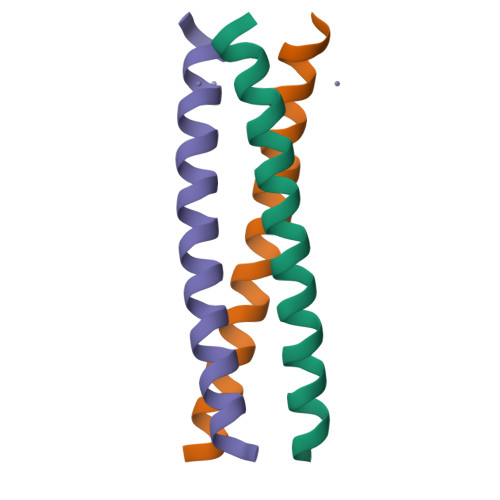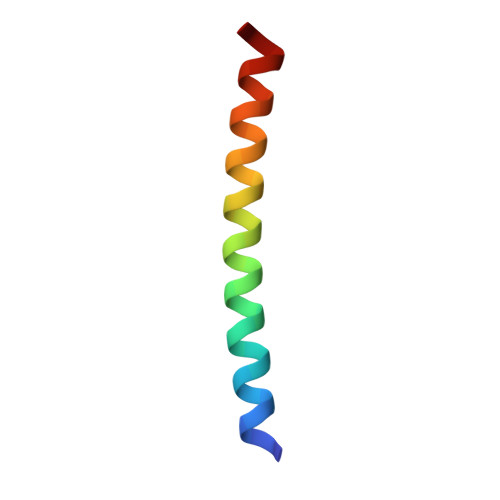Open Reading Frame 1 Protein of the Human Long Interspersed Nuclear Element 1 Retrotransposon Binds Multiple Equivalents of Lead.
Pinter, T.B.J., Ruckthong, L., Stuckey, J.A., Deb, A., Penner-Hahn, J.E., Pecoraro, V.L.(2021) J Am Chem Soc 143: 15271-15278
- PubMed: 34494819
- DOI: https://doi.org/10.1021/jacs.1c06461
- Primary Citation of Related Structures:
7N2Y, 7N2Z - PubMed Abstract:
The human long interspersed nuclear element 1 (LINE1) has been implicated in numerous diseases and has been suggested to play a significant role in genetic evolution. Open reading frame 1 protein (ORF1p) is one of the two proteins encoded in this self-replicating mobile genetic element, both of which are essential for retrotransposition. The structure of the three-stranded coiled-coil domain of ORF1p was recently solved and showed the presence of tris-cysteine layers in the interior of the coiled-coil that could function as metal binding sites. Here, we demonstrate that ORF1p binds Pb(II). We designed a model peptide, GRCS L16CL23C, to mimic two of the ORF1p Cys 3 layers and crystallized the peptide both as the apo-form and in the presence of Pb(II). Structural comparison of the ORF1p with apo-( GRCS L16CL23C) 3 shows very similar Cys 3 layers, preorganized for Pb(II) binding. We propose that exposure to heavy metals, such as lead, could influence directly the structural parameters of ORF1p and thus impact the overall LINE1 retrotransposition frequency, directly relating heavy metal exposure to genetic modification.
Organizational Affiliation:
Department of Chemistry, University of Michigan, Ann Arbor, Michigan 48109, United States.



















